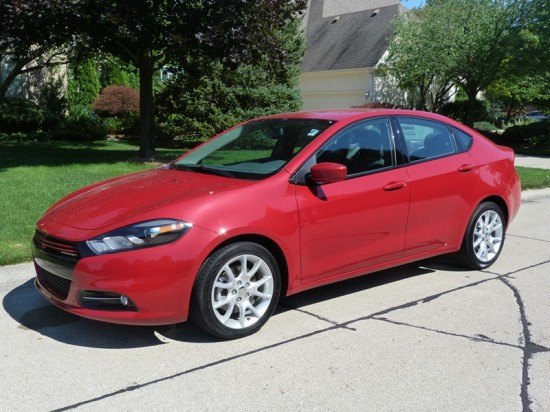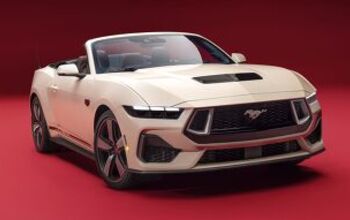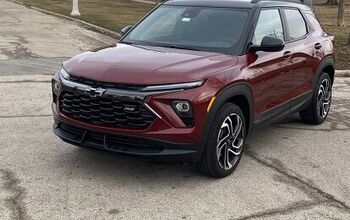Wall Street Journal Misses Its Mark With The Dart
It’s the kind of mistake that only a blogger (said with a contemptuous sneer) would make. The Wall Street Journal reports that
“U.S. regulators rated a new Chrysler Group LLC compact car with highway fuel-economy of 41 miles a gallon, a move that fulfills a key element of the company’s 2009 federal bailout and cleared the way earlier this year for majority owner Fiat SpA to increase its stake in the Detroit auto maker.”
They got it wrong.
To hear the WSJ tell it, you’d be led to believe that
“Italy’s Fiat took control of Chrysler in 2009 after agreeing with the U.S. government to help the U.S. auto maker produce a line of new fuel-efficient on cars based on Fiat designs. Fiat was originally given a 20% stake in Chrysler, and was allowed to increase its holding for achieving certain goals, one of which was helping Chrysler produce a car that goes at least 40 miles on a gallon of gasoline.”
The WSJ isn’t technically wrong – one of the stipulations was for Fiat to help Chrysler produce a 40 mpg car. But it had nothing to do with 40 mpg highway, the Dodge Dart Aero, or even the current fuel economy regulations as we know them.
As our Editor Emeritus Ed Niedermeyer reported back in 2011, the requirement, as stipulated by the U.S. government, was for Fiat to produce a made-in-America car that got a combined 40 mpg unadjusted. This means, crucially, that the combined figure is calculated using the pre-2008 fuel economy calculation standard that led to inflated fuel economy ratings. How much of a difference does this really make? Ed laid it all out unsparingly
“40 MPG combined unadjusted translates to almost exactly 30 MPG combined on the “adjusted” EPA test cycle which is used to produce window stickers for vehicles currently on the market. This is hardly a benchmark for a meaningful “Ecological Commitment” in the sense that a significant number of currently-available mass-market cars currently achieve this standard, and the cleanest vehicles on the market exceed it by dramatic amounts. According to the EPA, at least 11 2010 model-year “compact cars” currently achieve the 30 MPG combined adjusted standard. At least six “midsize sedans” achieved the magic number for the outgoing model-year, as did two “upscale sedans,” two convertibles, two station wagons and three SUVs (although the SUVs are all derivatives of the Ford Escape Hybrid).”
The WSJ uses the 2013 Dodge Dart Aero as its example, but the Dart Aero isn’t the sole model to get the 40 MPG unadjusted combined figure – the base 1.4L 6-speed manual car returns 32 mpg combined, while the automatic 1.4L returns 31 mpg combined, which would place them above the 40 mpg unadjusted cutoff value. The Aero models get 32 mpg combined with either transmission. Meanwhile, Darts with the 2.0L 4-cylinder get 29 mpg combined with the manual (just missing the mark) and 27 mpg with the automatic.
While Ed already explored the inside story of how a few word choices effectively torpedoed any chance for meaningful advancement in fuel efficiency, (while giving Marchionne & Co a free slice of Fiat), the “40 MPG meme” is still alive and well. For all the darts that the WSJ has thrown at the Obama administration, one would think that they’d be the last entity to let the Dems dodge their well-aimed crosshairs on this issue.
More by Derek Kreindler
Latest Car Reviews
Read moreLatest Product Reviews
Read moreRecent Comments
- Dartdude The global climate scam is a money and power grab. If you follow the money it will lead you to Demo contributors or global elitists. The government needs to go back to their original purpose and get out of the public sector.
- FreedMike Miami is a trip - it's probably the closest thing we have to Dubai in this country. If you are into Lambos and the like, definitely go - you'll see a show every night. These condos fit right in with the luxury-brand culture - I'm surprised there isn't a Louis Vuitton or Gucci building. I was in Miami Beach in January with my fiancee, and we shared a lovely lunch that consisted of three street tacos each, chips and salsa, and two sodas. Tab: $70.00, with tip. Great town, assuming you can afford to live there.
- Kjhkjlhkjhkljh kljhjkhjklhkjh Pay money to be inundated in Adverts for a car that breaks when you sneeze? no
- Laflamcs My wife got a new 500 Turbo in 2015. Black exterior with an incredible red leather interior and a stick! The glass sunroof was epic and it was just about the whole roof that seemed to roll back. Anyway, that little bugger was an absolute blast to drive. Loved being run hard and shifted fast. Despite its small exterior dimensions, one could pile a lot into it. She remember stocking up at COSTCO one time when a passerby in the parking lot looked at her full cart and asked "Will it all fit?" It did. We had wonderful times with that car and many travels. It was reliable in the years we owned it and had TONS of character lacking in most "sporty" car. Loved the Italian handling, steering, and shift action. We had to trade it in after our daughter came along in 2018 (too small for 3 vacationers). She traded it in for a Jeep Renegade Latitude 6 speed, in which we can still feel a bit of that Italian heritage in the aforementioned driving qualities. IIRC, the engine in this Abarth is the same as in our Renegade. We still talk about that little 500..........
- Rochester If I could actually afford an Aston Martin, I would absolutely consider living in an Aston themed condo.


































Comments
Join the conversation
Mercedes killed the Neon and starved the PT Cruiser.
So many comment on the big turnaround at Chrysler, but their products still make the bottom of the list in consumer magazines. As I recall, about every ten years there are claims that Chrysler finally got it right, but not long after they are bleeding money and back up for sale. As I'd hate to see another American company die, It's long to take this zombie off of life support for good. The Italians will eventually figure it out and pull the plug.